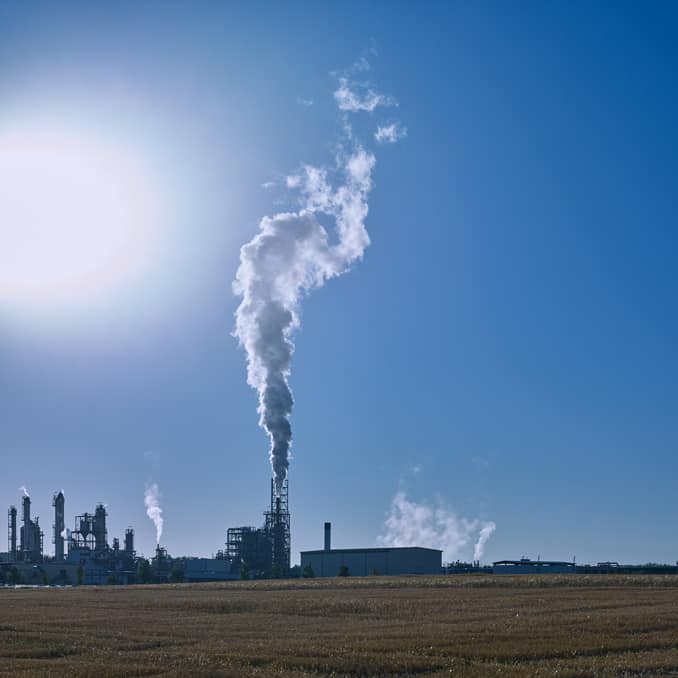
Solving the plastic shortage
New catalyst could stabilize supplies of one of the world’s most important plastics.

New catalyst could stabilize supplies of one of the world’s most important plastics.
In a year that has already battered manufacturing supply chains, yet another shortage is complicating manufacturers’ and consumers’ lives: plastics, and the food packaging, automotive components, clothing, medical and lab equipment and countless other goods that rely on them.
But a new chemical catalyst developed at the University of Michigan could enable the production of more of the feedstock for the world’s second most widely-used plastic. The feedstock, propylene, is used to make the plastic polypropylene—eight million tons of it each year.
The new catalyst, which can make propylene from natural gas, is at least ten times more efficient than current commercial catalysts. And it lasts ten times longer before needing regeneration. It is made of platinum and tin nanoparticles that are supported by a framework of silica.
“Industry has shifted over the years from petroleum feedstocks to shale gas,” said Suljo Linic, the Martin Lewis Perl Collegiate Professor of Chemical Engineering at U-M and senior author on a paper published in Science. “So there has been a push to find a way to efficiently produce propylene from propane, a component of shale gas. This catalyst achieves that objective.”
Propylene has traditionally been produced at oil refineries in massive steam crackers that break down petroleum feedstock into lighter hydrocarbon molecules. But cracking shale gas to produce propylene has been inefficient. The new catalyst can efficiently produce propylene—a molecule with three carbon atoms and six hydrogens—from propane, which has two additional hydrogens. It uses a process called non-oxidative dehydrogenation. One of the reasons current catalysts are inefficient is that they require adding hydrogen to the process. This catalyst does not.

The key innovation of the new catalyst is how it uses silica as a support structure for the platinum and tin nanoparticles, rather than the alumina that’s used in current catalysts. Alumina interacts with tin, causing it to separate from the platinum and break the catalyst down. Because the new catalyst holds off this interaction, it has a longer life.
“Silica as support for platinum-tin nanoparticles has been tried before, but conventional synthesis techniques weren’t precise enough to enable close interaction between platinum and tin,” said Ali Hussain Motagamwala, a postdoctoral research fellow at U-M and first author on the paper. “We overcame this by first synthesizing a platinum-tin complex with excellent interaction. We then supported this complex onto silica to produce a very well-defined catalyst that is active, selective and stable during non-oxidative propane dehydrogenation.”
A key to commercialization will be finding a way to regenerate the catalyst after it becomes fouled by carbon. Even though current catalysts are short-lived, Linic says, the chemical industry has developed an intricate system that can regenerate the fouled catalyst quickly and efficiently. A similar system will need to be developed for the new catalyst.
“Building the kinds of plants that would run this process on a commercial scale would be a massive investment, and for that reason, the chemical industry tends to move slowly,” he said. “This catalyst is very good, but regeneration is the next big question.”
While the catalyst is still in the research stage, it holds the possibility of bolstering the world’s propylene supplies, which have been depleted by skyrocketing global demand, COVID-driven production issues and a series of hurricane-related shutdowns at Gulf coast oil refineries that produce the chemical.
In addition to Linic and Motagamwala, the team includes chemical engineering graduate student research assistants Rawan Almallahi and James Wortman and chemical engineering PhD candidate Valentina Omoze Igenegbai.
The paper is titled “Stable and selective catalysts for propane dehydrogenation operating at thermodynamic limit.” The research was supported by the U.S. Department of Energy Rapid Manufacturing Institute (award number DE-EE0007888) and by the United States Department of Energy Office of Basic Energy Sciences, Division of Chemical Sciences (DE-SC0021008).